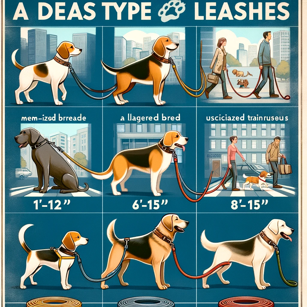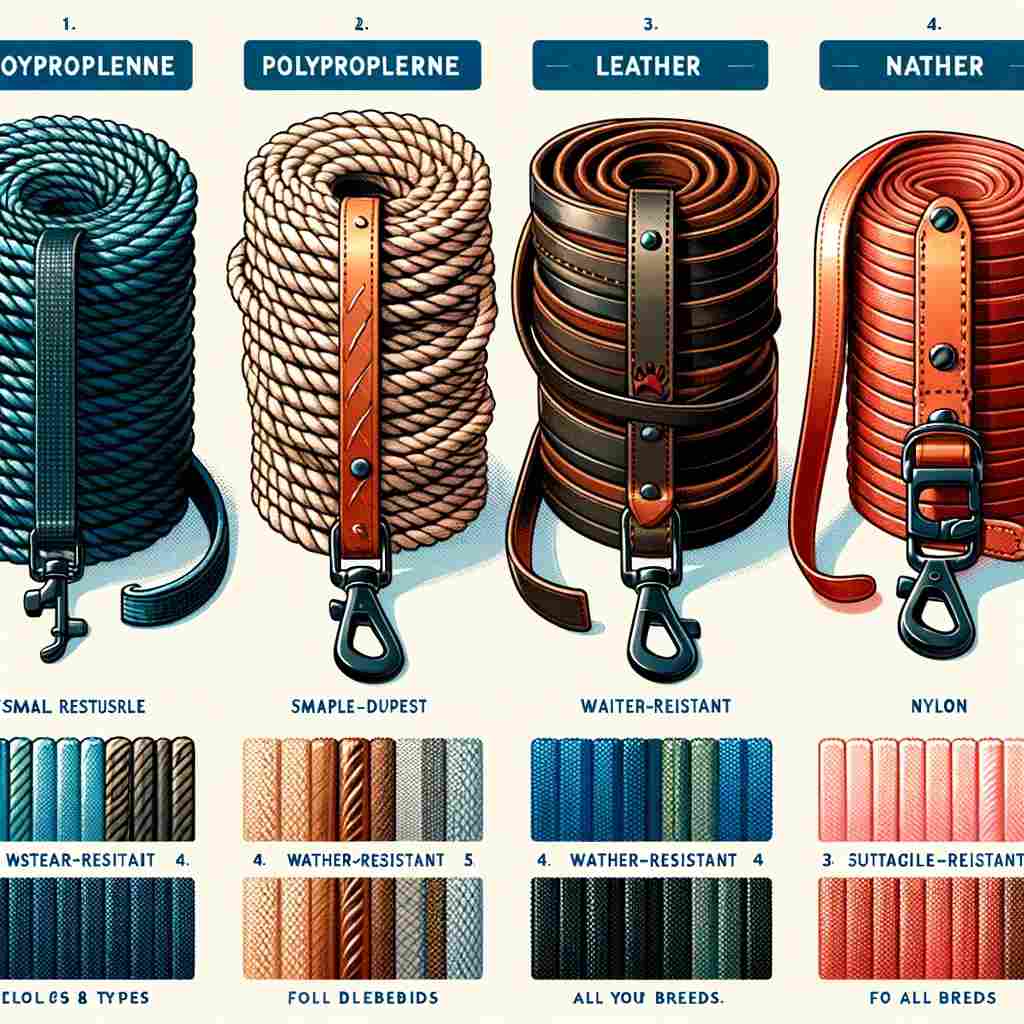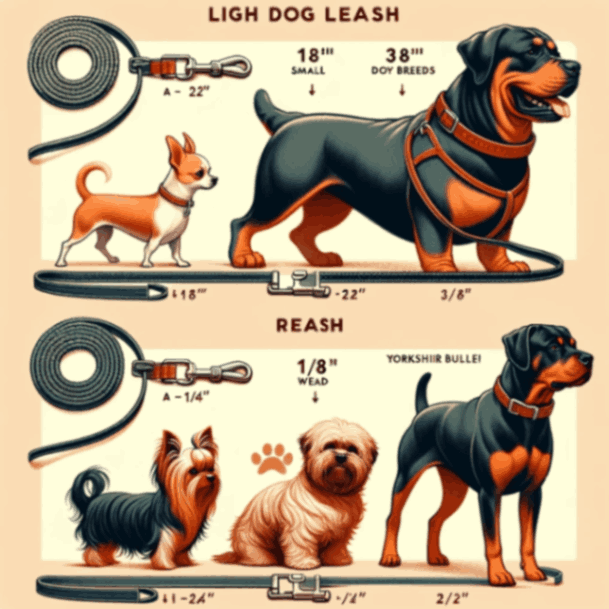When it comes to dog care, selecting the right leash is a crucial decision that impacts not only the safety and control of your dog but also the quality of your walks and training sessions. This comprehensive guide is designed to help you navigate through the various aspects of choosing a dog leash, with a special focus on dog leash length and different types of dog leashes. Our aim is to provide a straightforward, insightful, and immersive experience for every dog owner.
Four Key Considerations for Choosing a Dog Leash
Choosing the Best Leash Length

- 1 – 1 ½’ Leads: These short leads are primarily used for training and ensuring close control in potentially chaotic environments, such as busy streets or crowded dog parks. They are also ideal for teaching dogs not to pull.
- 4′ Leads: This length is a standard choice for everyday walks. It offers enough slack for your dog to explore while still keeping them close. It’s particularly suitable for medium-sized breeds like Beagles or Bulldogs.
- 6′ Lead: A versatile option for both walking and basic training. It allows your dog more freedom while still under control, which is great for larger breeds like Labradors or Golden Retrievers.
- 8′ – 15′ Lead: These leads are excellent for advanced training, such as teaching recall in a controlled environment. They also allow dogs more room to roam on walks, suitable for dogs with good recall training.
- 15′ – 150′ Leads: Reserved mainly for specific training scenarios, like tracking or search-and-rescue practice. They are not recommended for daily walks due to the potential for entanglement and reduced control.
Choosing the Correct Width of Leash

- Polypropylene Rope: Known for its lightweight and durable nature, these leashes are perfect for small to medium breeds and are resistant to water and mildew.
- Leather: Offering a combination of elegance and durability, leather leashes are a favorite for owners of strong, larger breeds. They are also known for their longevity and comfort, as they tend to soften over time.
- Synthetic DuraSoft: This material is a great alternative to leather, offering similar durability and style but with added weather resistance. It’s a versatile choice for any breed.
- Nylon: The most common and affordable type of leash. Nylon leashes come in a wide range of colors and patterns, making them a popular choice for fashion-conscious owners. They are suitable for all breeds and activities.
Choosing the Right Diameter of Leash

- ⅛” width: Ideal for small and toy breeds like Chihuahuas or Yorkshire Terriers, these leashes are light yet strong enough to maintain control.
- ⅜” width: A good match for medium-sized breeds. These leashes provide a balance of strength and manageability, perfect for breeds like Cocker Spaniels or French Bulldogs.
- ½” width: Best for large, powerful breeds such as Rottweilers or Mastiffs. These leashes are designed to handle the strength and pull of larger dogs.
Choosing the Best Type of Lead for Your Dog

- Snap Leads: These leads feature a snap hook that clips onto the collar. They are easy to use and come in a variety of materials and lengths. Ideal for quick walks and trips.
- Slip Leads: These are all-in-one collar and leash setups, great for training purposes. They tighten when the dog pulls and loosen when the behavior is corrected, making them useful for teaching leash manners.
- Martingale Lead: A combination of a collar and lead, this type is particularly useful for dogs that can slip out of traditional collars. They provide additional control without choking.
Additional Considerations
Breed-Specific Recommendations
- Small Breeds: Lightweight materials like nylon or thin leather.
- Medium Breeds: Versatile materials like standard leather or synthetic DuraSoft.
- Large Breeds: Strong materials like thick leather or heavy-duty nylon.
Size and Strength Considerations
- Small Dogs: Narrower diameters and lighter materials.
- Medium Dogs: Medium-width leashes with durable materials.
- Large Dogs: Wide, strong leashes to handle their strength and size.
Behavioral Aspects
- For Pullers: Slip leads or martingale leads to discourage pulling.
- For Well-Behaved Dogs: Standard snap leads or lightweight options.
- For Training: Short leads for control or longer leads for recall training.
Owner’s Lifestyle and Needs
- Urban Walks: Shorter, more manageable leads.
- Rural Adventures: Longer leads for more exploration.
- Active Owners: Durable materials like nylon or leather.
Conclusion
In conclusion, choosing the right leash for your dog is a decision that requires thoughtful consideration of various factors like dog leash length
Common Questions and Answers on Selecting the Ideal Dog Leash
- How do I choose a dog leash? Choose a dog leash based on your dog’s size, temperament, and walking environment. For small to medium dogs, a lightweight, durable leash is ideal. For larger breeds, opt for a stronger, thicker leash. Reflective material is good for night walks, and a comfortable handle is important for longer walks.
- Should I get a 5/8 or 3/4 leash? The choice between a 5/8 or 3/4 inch leash depends on your dog’s size and strength. A 5/8 inch leash is usually sufficient for smaller to medium-sized dogs, offering a balance between strength and lightness. A 3/4 inch leash is better for larger, stronger dogs, providing more durability and control.
- Should I walk my dog with a long or short leash? The choice of leash length depends on the walking environment and your dog’s behavior. Short leashes (4-6 feet) are better for busy areas, giving you more control and keeping your dog close. Long leashes (8 feet or more) are suitable for open, safe areas where your dog can explore more freely.

